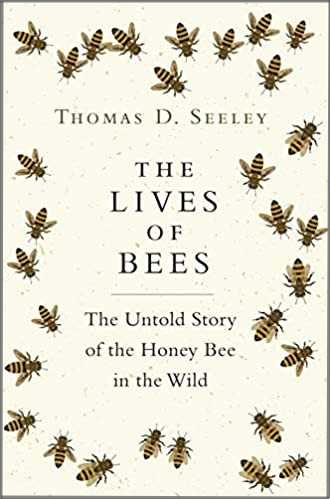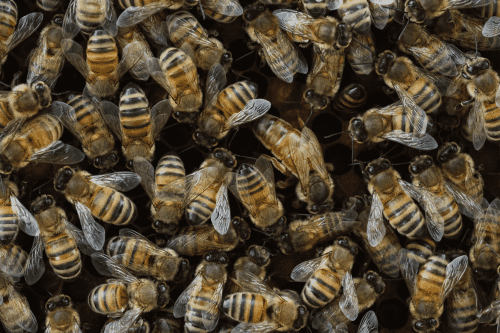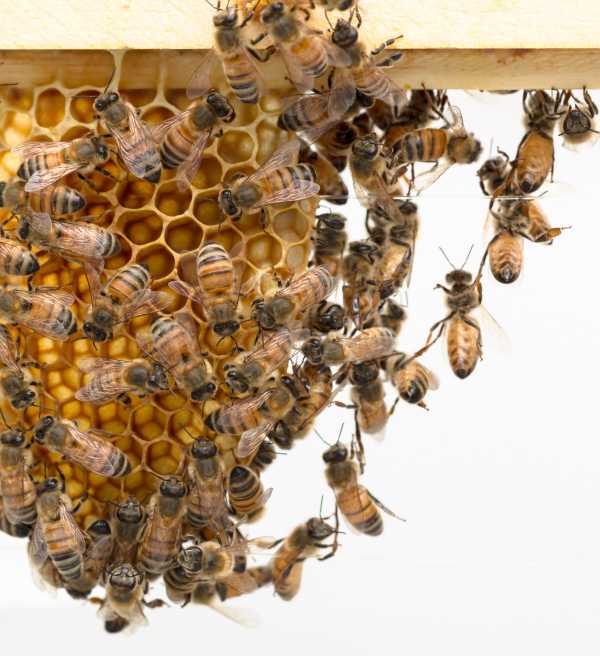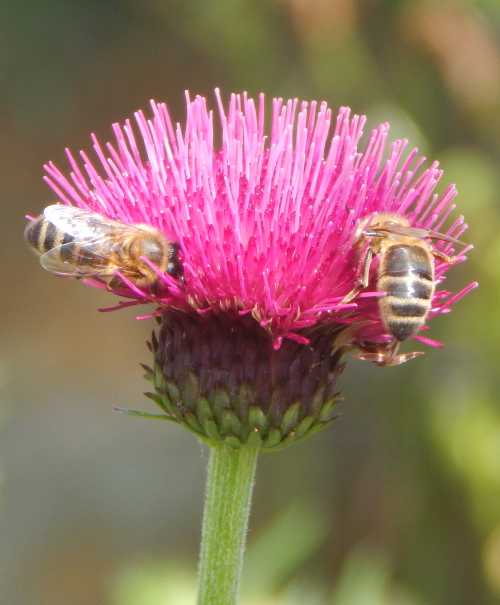How Do Honey Bees Use Pheromones?
Pheromones are chemical substances that, when secreted by one animal (via the exocrine glands), serve to stimulate either a behavioural or physiological response from another animal of the same species.
For years, scientific research has investigated the use of pheromones in honey bee colonies as a means to further our understanding of the workings and organisation of this amazing and complex superorganism, comprising a queen, thousands of workers performing different tasks, drones and dependent brood.
How Do Bees Use Pheromones?
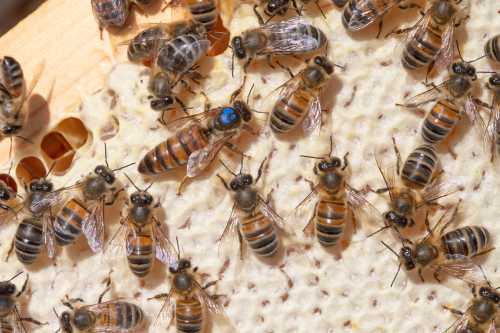
The honey bee colony is not only super-efficient, its members demonstrate amazing adaptability in a variety of ways.
Pheromones are key to the ability of honey bees to organise themselves and respond with flexibility to internal and external changes and dynamics.
The three castes and the brood within a honey bee colony use pheromones to communicate regarding reproduction, task allocation, orientation, foraging, as well as alarm raising and defence of the colony against predators such as hornets.
The Two Types Of Honey Bee Pheromone
There are two groups of honey bee pheromone:
1. Primer pheromones
Primer pheromones stimulate longer-term changes and responses in colony members on the receiving end of the pheromone.
They promote stability and harmony within the colony to keep it functioning smoothly and efficiently.
Primer pheromones are emitted by brood, but they are mostly excreted by the honey bee queen, especially via the combined pheromones that form what is referred to as the ‘queen signal’.
However, both brood and the queen do also excrete releaser pheromones.
2. Releaser pheromones
Releaser pheromones stimulate short term behaviours. They may be used, for example, in nestmate recognition, to recruit colony members for foraging, or to stimulate a defensive response to a temporary threat to the colony.
Releaser pheromones are primarily excreted by worker honey bees.
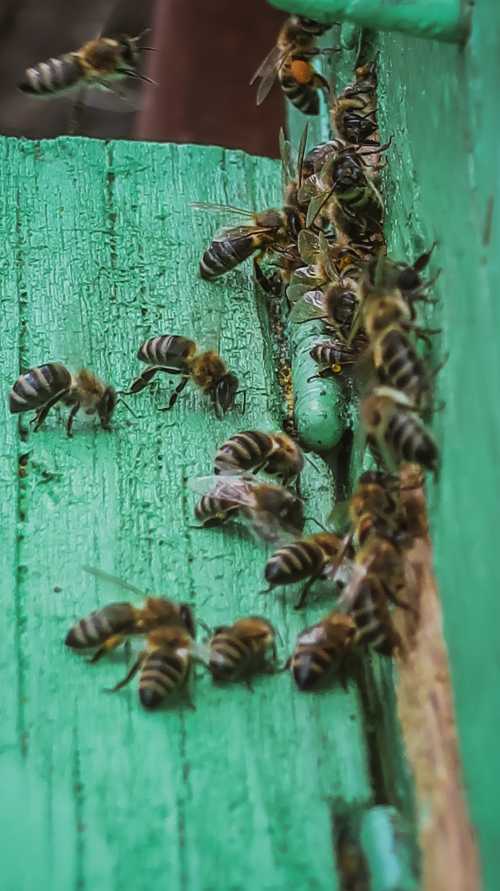
Pheromones are excreted from ducts located at various points in the honey bee body, and vary according to caste within the colony
How Are Pheromone Signals Detected By Other Bees In The Colony?
Scientific research suggests pheromone signals are primarily collected via the antennae.
However, there is also some suggestion that higher processing of the pheromone cues may occur in the brain, for example, in the Kenyon cells of the mushroom bodies.
The Queen’s Pheromones And The Queen's Signal
The queen excretes a number of pheromones via different exocrine glands, which when combined together, form the 'queen signal', which acts primarily as a primer pheromone.
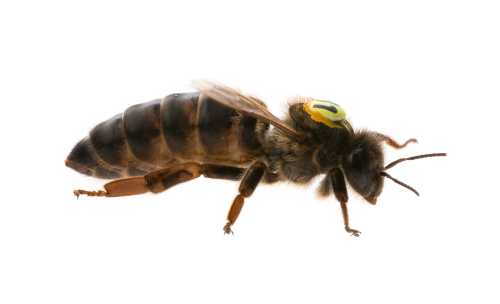
The Queen Mandibular Pheromone
The main component of the queen’s signal is the queen mandibular pheromone (QMP), which is a substance secreted by the mandibular glands which feature on both sides of the head, directly above the mandibles (mouthparts).
The queen mandibular pheromone component of the queen signal serves to promote stability, cohesion, well-being and harmony in the colony. It stimulates worker activity, such as brood feeding, foraging, guarding, creating and building comb.
At the same time, as long as she is fit and healthy the QMP will serve to suppress the laying of eggs by workers, and will also prevent workers from rearing a new queen. All of these are primer effects of the queen signal.
Additionally, the queen mandibular pheromone comprises pheromones that have releaser effects which can, for instance:
- stimulate mating (attracting drones to mate),
- stimulate swarming (instigating the forming of a clump of bees around the queen), and
- attract workers to groom and feed her (worker retinue behavior).
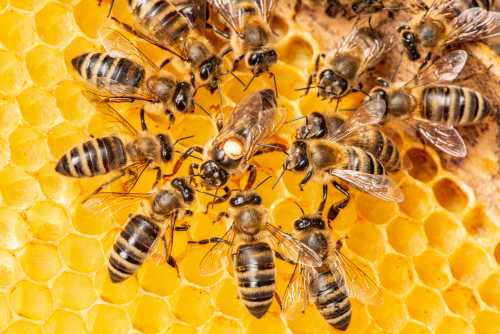 A honey bee queen with her worker retinue
A honey bee queen with her worker retinueAlternative sources of the queen signal have been identified in the tergal, tarsal, Dufour and Koschevnikov glands.
Dufour's Gland
The Dufour's gland is located in the sting shaft and is found in queens and workers.
In queens, the Dufour's gland secretes a series of esters which also function as part of the multi-sourced queen signal.
Read more about the Dufour's gland in honey bees.
What Happens If The Queen Stops Producing Her Pheromone (Queen Signal)?
Should a queen become unfit or sick, her pheromone signal deteriorates substantially. This phenomenon encourages the workers to rear a new queen in a very short space of time (12 – 24 hours).
However, absence of brood to rear a queen leads to the decline and disruption of the colony: workers begin laying eggs that would ultimately hatch into drones (see Do bees have X and Y chromosomes?), and they may neglect their colony duties such as cleaning and guarding, leaving the colony more susceptible to disease and predation.
For this reason, in the absence of natural supersedure, changing the queen (re-queening) is a strategy sometimes used by beekeepers to rectify potential risks to the colony (although re-queening is a strategy employed by beekeepers for multiple reasons).
Worker Pheromones
Some of the pheromones emitted by workers include the following:
Pheromone Ethyl Oleate
This substance has been found in high concentrations on the
body of adult forager bees, and is associated with task allocation.
When a high number of foragers are present in the colony, secretion of this pheromone inhibits the further development of young bees, with the effect that they remain focused on duties inside the nest (cleaning, wax comb building etc).
However, when foragers grow old or are lost, secretion of this pheromone fails or reduces, and the young bees develop into new foragers.
The Nasonov Gland Pheromones
The Nasonov gland pheromone is exclusive to worker honey
bees, and is secreted via a duct that opens through the cuticle located between
the sixth and seventh segments (tergites) on the abdomen.
Workers secrete and disperse the Nasonov pheromone by exposing their Nasonov gland and fanning their wings. This pheromone has been identified with a number of behaviours, such as:
- New queen selection
According to some studies, it is possible that the Nasonov pheromone is used in the selection of larvae to rear as new queens. This occurs when a worker exposes its Nasonov gland to attract other workers toward the selected larval cell. - Swarming cohesion
Together with the queen mandibular pheromone, the secretion of workers’ Nasonov gland function is a cohesion factor during swarming.
When a scout bee finds a potential nest site, it communicates the location to the other workers by the waggle dance, then returns to the site and starts to release the Nasonov pheromone to drive the swarm exactly to the new nest entrance. - Forager recruitment
The function of the Nasonov gland in recruiting workers toward foraging sites (flowers and water) has been known for some time, but its precise mechanism is still debated.
Some suggest that the Nasonov pheromone is mainly used to recruit workers toward water sources and is involved in nectar source location only when the reward is very high or the nest stores are particularly scarce.
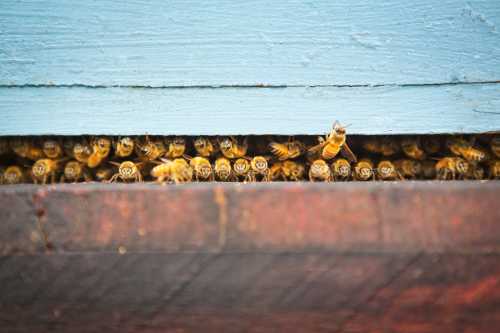
The worker footprint pheromone
The worker footprint pheromone is secreted via the tarsal glands on the feet.
It is thought to aid in marking the hive entrance when deposited there by landing workers.
It is believed the pheromone is probably also deposited on visited flowers.
Alarm Pheromones
The alarm pheromones are mainly produced in worker honey bees by the Koschevnikov gland in the sting shaft.
During defensive behavior guard bees appear at the hive entrance. They raise their abdomen to expose the sting chamber and release alarm pheromones. At the same time, they fan their wings, thus dispersing the pheromone.
This chemical is absent in queens and young workers but increases as a worker bee ages, reaching its optimal level when the worker is about 2–3 weeks old, coinciding with the time she will begin her role as a guard bee.
The amount of alarm pheromone produced by a worker decreases as she switches duties and becomes a forager.
Alarm pheromone is also secreted from the Dufour's gland, which is again located in the sting shaft.
Mandibular Gland Pheromones
When a worker becomes a forager, its mandibular glands produce a very odorous compound which (along with the alarm pheromone produced in the Koschevnikov gland) also acts as an alarm pheromone.
Drone Pheromones
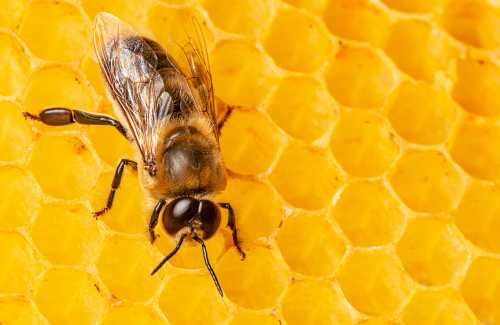
It appears most known pheromonal signals in honey bee drones are linked to sexual behaviours.
It is believed honey bee drones undergo a similar nestmate recognition process at the hive entrance as honey bee workers, suggesting the functioning of a pheromonal signal.
Brood Pheromones
Brood pheromone is secreted by larval salivary glands, which are also used for secreting silk used in the construction of the pupal cocoon - see honey bee life cycle.
Brood pheromones may act both as primer and releaser pheromones, that for example, serve to regulate worker development and activity such as cleaning, foraging, brood care and cell capping (along with the endocrine system).
Resources
- Bortolotti L, Costa C. Chemical Communication in the Honey Bee Society. In: Mucignat-Caretta C, editor. Neurobiology of Chemical Communication. Boca Raton (FL): CRC Press/Taylor & Francis; 2014. Chapter 5. Available from: https://www.ncbi.nlm.nih.gov/books/NBK200983/
- Morphology of the Dufour gland within the honey bee sting gland complex. Stephen J. Martin, Vicky Dils and Johan Billen. Apidologie, 36 4 (2005) 543-546
DOI: https://doi.org/10.1051/apido:2005041
If you found this page helpful or interesting, I'd really be grateful if you would share it with others - if not this page, perhaps another, such as Gardening For Bees.
Thank you so much :) .
